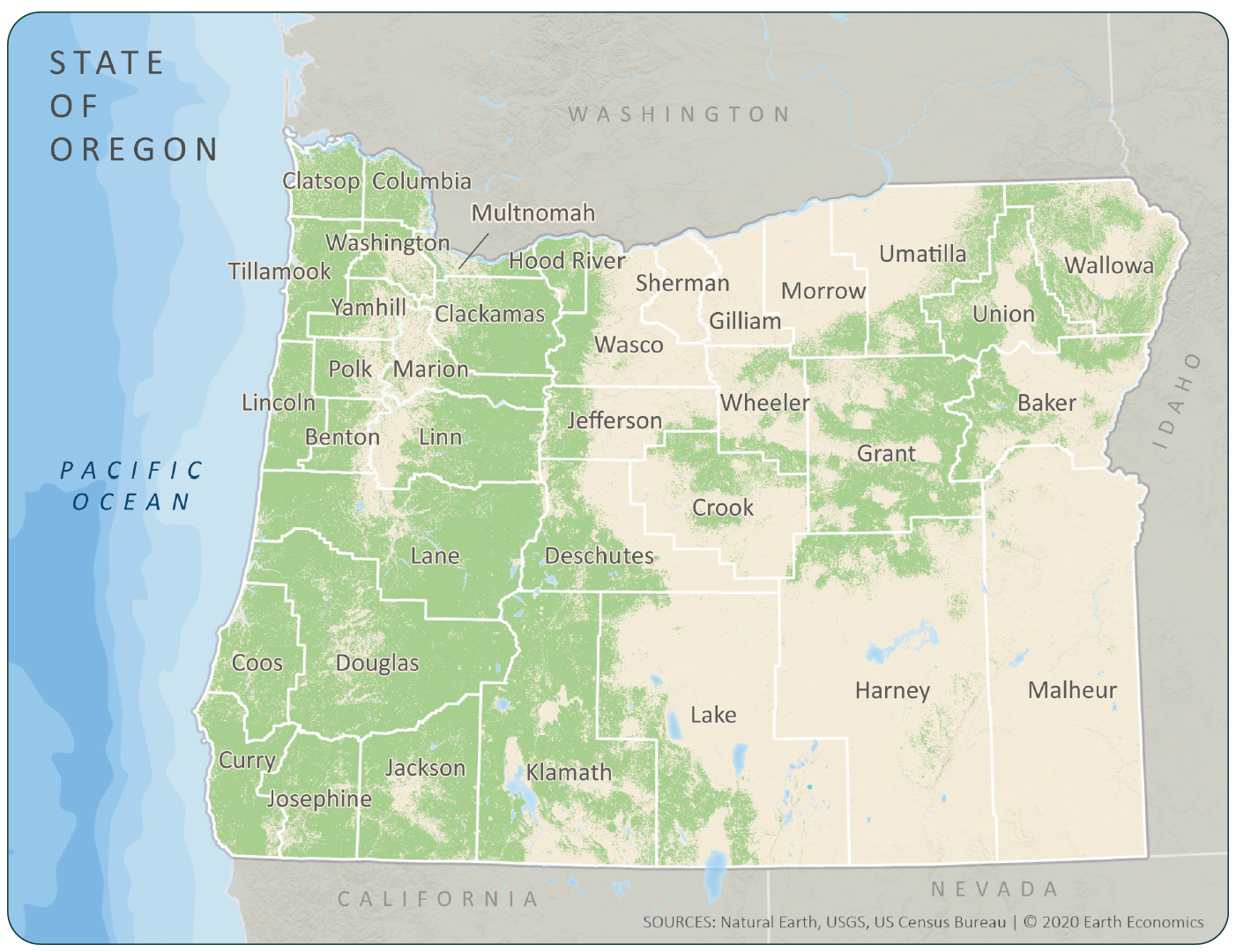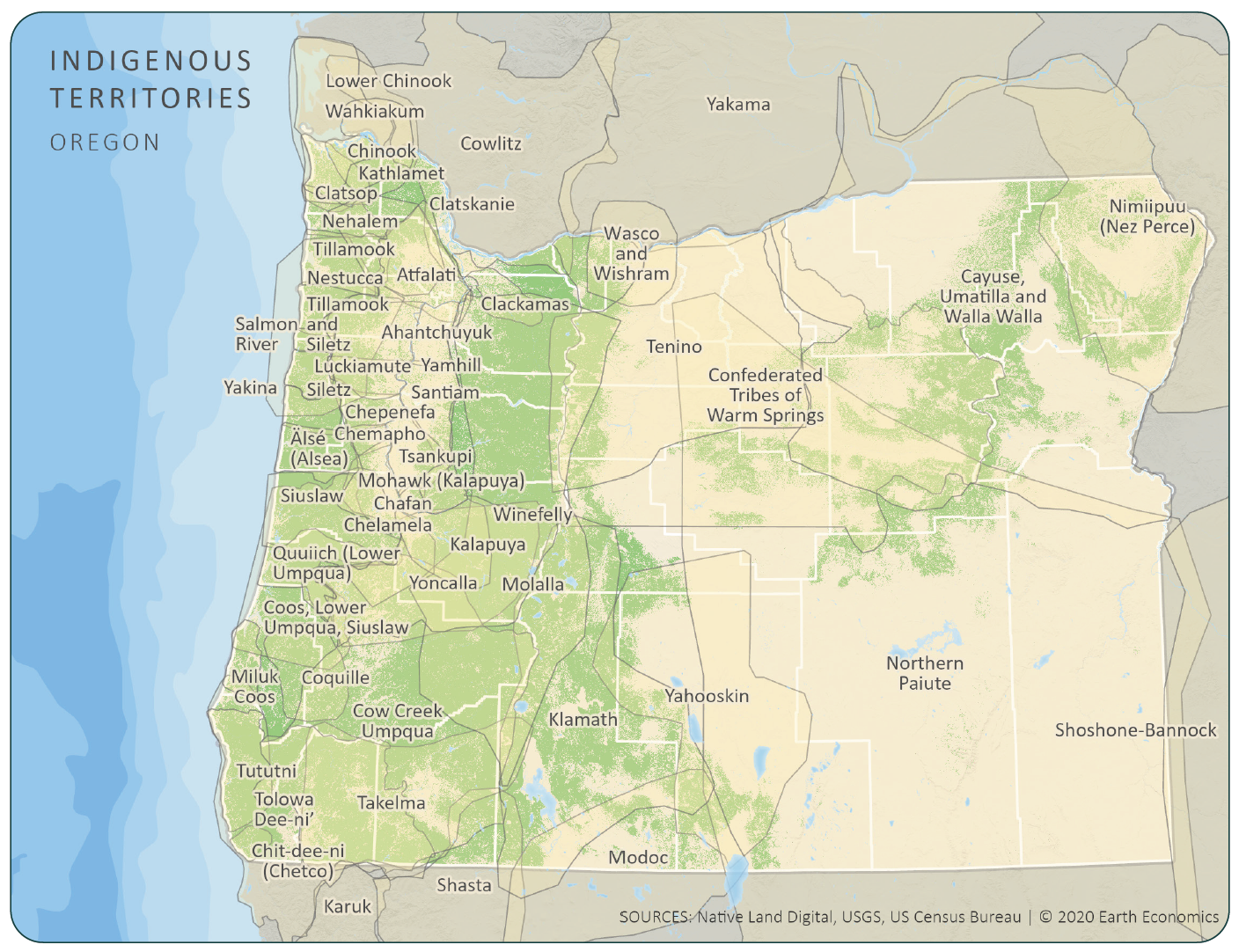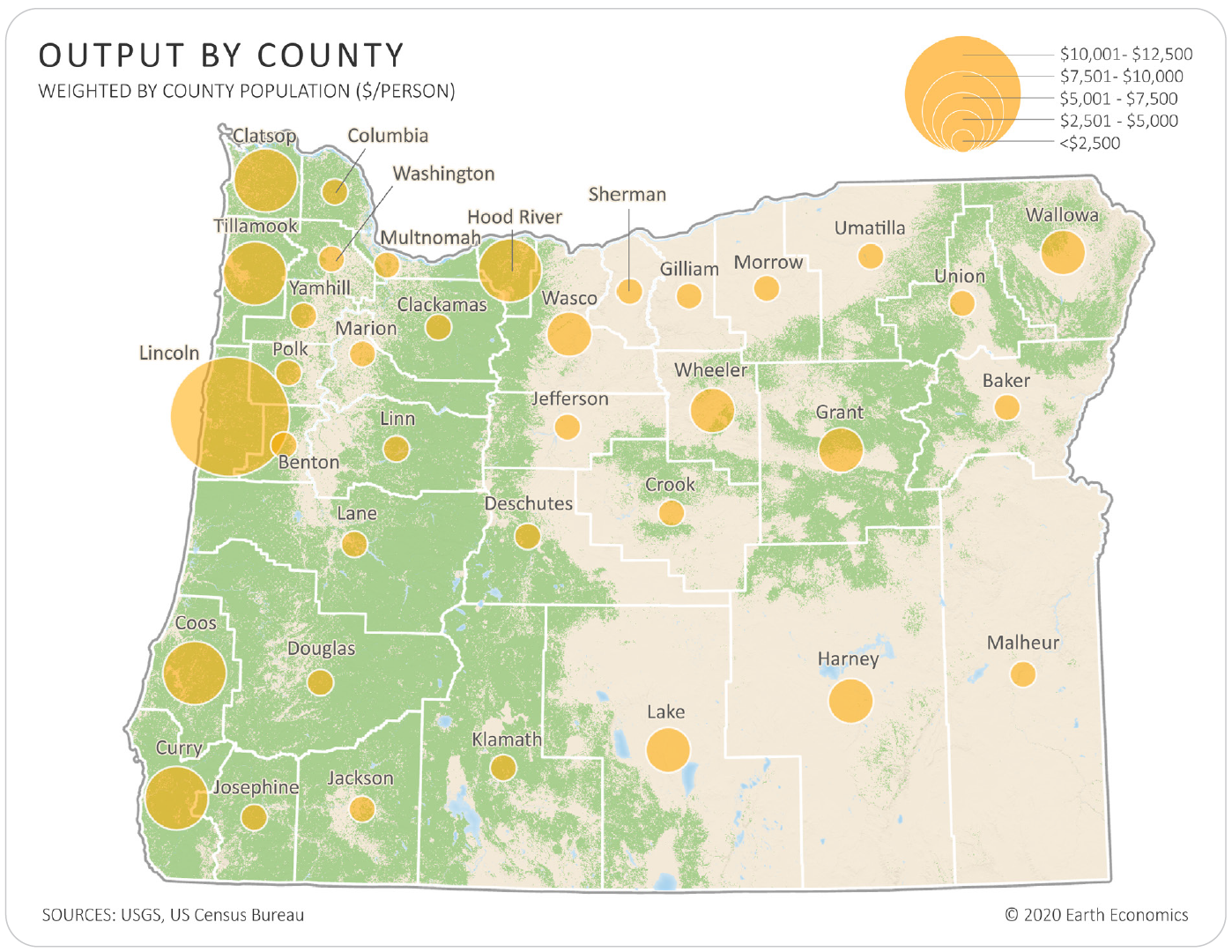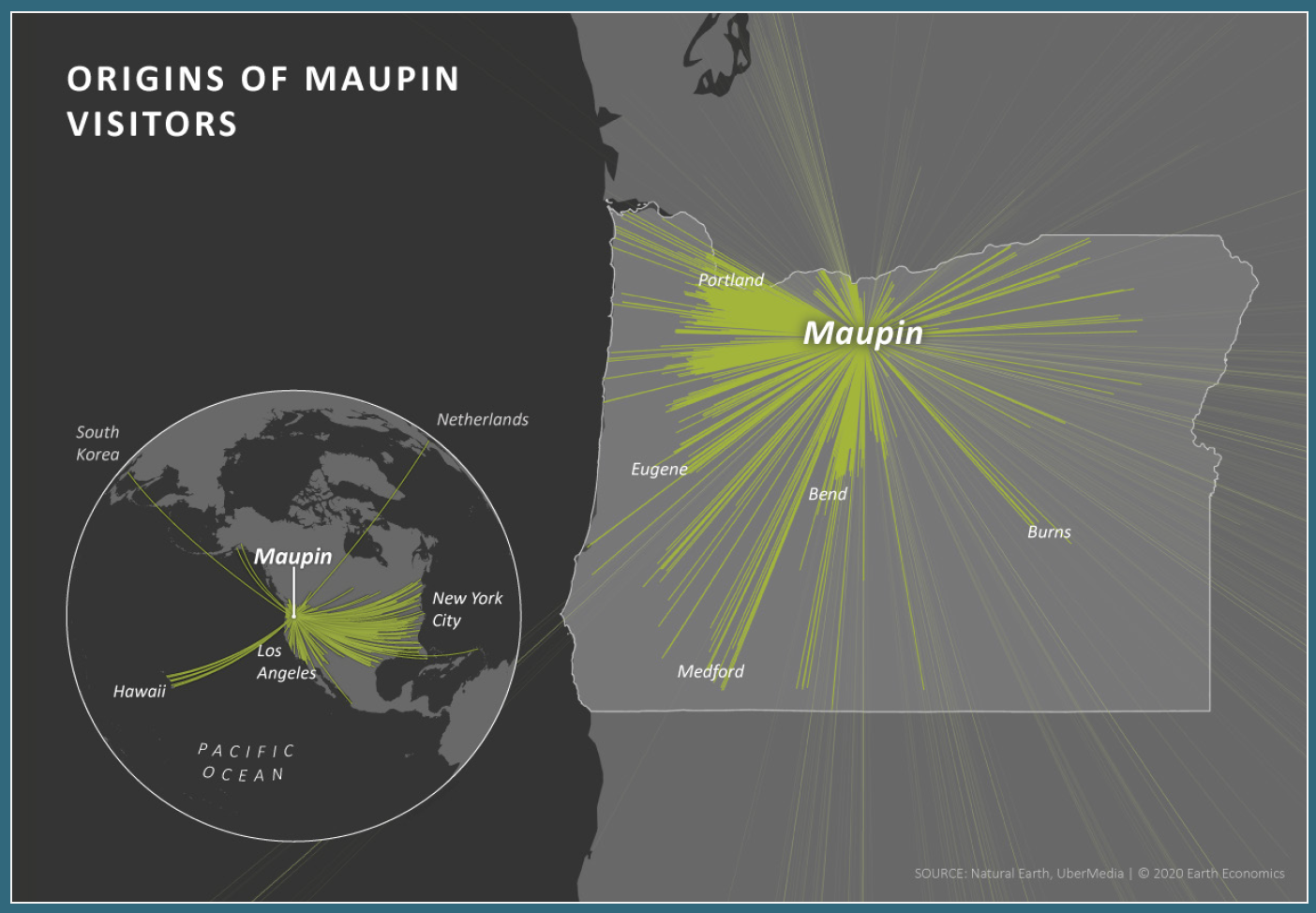2021 | Oregon
Oregon is home to scenic wonders and abundant natural resources. Many of these areas, and the activities they support carry national name recognition: windsurfing in the Columbia River Gorge, hiking in the Cascades, camping at Crater Lake, fishing the Oregon Coast, and jet boat tours in Hells Canyon. Yet there are many locations in Oregon that hold a lower degree of fame, special places that are less traveled. Oregon’s impressive landscapes – well known or not – lend themselves to boundless outdoor recreation opportunities.
Outdoor recreation is an important part of Oregon’s identity. An overwhelming majority of Oregonians participate in outdoor recreation (95%), while scenic beauty and outdoor recreation are primary drivers of visitation to and around the state. However, less understood are the quantifiable benefits that outdoor recreation participants have on Oregon’s economy.
This report quantifies the economic benefits of outdoor recreation, including the trip length, consumer spending, and economic effects associated with engaging in outdoor recreation activities in Oregon by residents and out-of-state visitors.
Report Highlights*
In 2019, outdoor recreation in Oregon supported $15.6 billion in spending.
Total consumer spending on outdoor recreation in 2019 supported 224,000 full and part-time jobs in Oregon, associated with $9.3 billion in wages and other compensation.
Spending by in-state travelers and out-of-state visitors ($7.3 billion) made up approximately 60% of trip-related spending.
Coastal Oregon counties – specifically, Lincoln, Tillamook, and Curry – had the highest percent of the labor force employed by outdoor recreation spending.
In the Media
Oregon Outdoor Recreation Economic Impact Study, Travel Oregon
New study shows how outdoor recreation in Oregon is a growing and important part of the state's economic growth and resiliency, Baker City Herald
Contact Us
Funding provided by: Oregon Tourism Commission (Travel Oregon), Oregon Department of Fish and Wildlife, Oregon Department of Parks and Recreation.
Suggested Citation: Mojica, J., Cousins, K., Madsen, T., 2021. Economic Analysis of Outdoor Recreation in Oregon. Earth Economics. Tacoma, WA.
*The COVID-19 pandemic has wrought major impacts on economies around the world, and Oregon’s economy is no exception. Additionally, in the late summer of 2020, historic wildfires wreaked havoc on a portion of Oregon’s landscape, including many of the areas commonly used for outdoor recreation. Though it is not yet possible to fully assess these impacts, the estimates in this report can be used as a baseline for future analyses. It should also be noted that the pandemic’s affect on unemployment has meant a hard hit for jobs associated with the recreation economy, including leisure and hospitality, retail trade, and government. That said, given that most outdoor recreational activities are relatively “safer” in terms of virus transmission potential, outdoor recreation may be an important tool for rebuilding local economies, as evidenced by preliminary data showing increased visitation at some sites, increased boater and RV registrations, increased fishing license sales, and higher gear and equipment sales.





